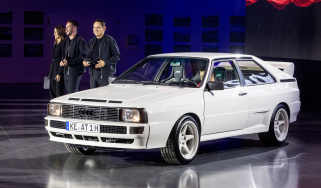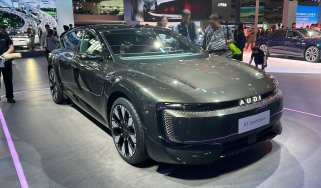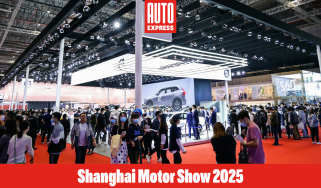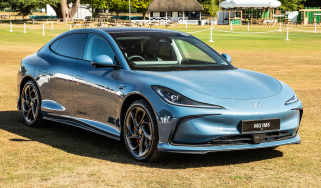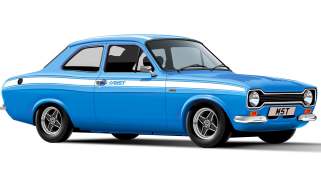Audi Q range: 10 things about the revolutionary quattro system (sponsored)
Audi quattro four-wheel-drive has been setting Audi cars apart from the competition for years. Here are 10 things you should know about it
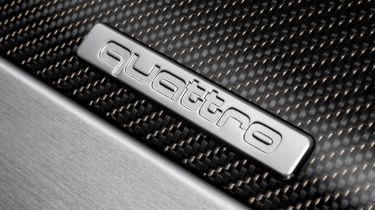
The Audi Q range is a familiar sight on our roads now – but here are 10 things you might not know about the range and the revolutionary quattro four-wheel-drive system.
1. One in five million
Four-wheel-drive cars have been around for decades, but Audi was a pioneer in ensuring that 4x4 technology was used to ensure control and performance for drivers on the road rather than on the farm. Now more than eight million quattro-equipped cars have been produced – the landmark car was a Q7.
2. Ur born in 1980
The company turned the world of performance cars on its head in 1980 when it revealed the Ur-Quattro (Ur means original or first in German) at the Geneva Motor Show. It was truly revolutionary to offer a sports car that used a lightweight four-wheel-drive system to ensure that power was delivered with control.
3. Motorsport revolution
quattro technology also contributed to three of the brand’s impressive 13 overall wins in 18 years of competition in the famous Le Mans 24-hour endurance race. Audi broke ground with iconic sportscars like the R8, R10 TDI and R15 TDI prior to the R18 e-tron quattro, which provided temporary four-wheel drive. While other performance cars scrabbled for grip, the Quattro put down its power without drama and went on to dominate in motorsport – especially rallying. The list of Audi’s successes includes four World Rally Championship titles, six victories at the Pikes Peak Hill Climb, two DTM titles, 11 national Super Touring Car Championships, a Touring Car World Cup and a TransAm Championship.
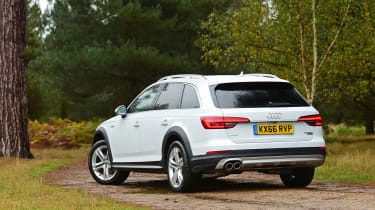
4. Allroads lead to Q
Audi models fitted with the quattro system were hugely popular with buyers who valued extra traction, but drivers wanted more ability to go off the beaten track. So in 1999 Audi finally created a car which bridged the gap between a traditional crude off-roader and a practical estate car – the allroad quattro. Its success and technology led directly to the development of the Q range.
5. Lights fantastic
Audi was the first company to introduce LED ‘daytime running’ lights to its cars. But they weren’t just a safety feature; they also allowed designers to create a more distinctive look. The latest A6 was the first model in the range to feature the distinctive ‘arrow’-shaped light, and daytime running lights are now used across the line-up.
6. Crash and diet
Audi’s expertise in aluminium has meant that its SUVs can remain lightweight and still achieve top crash test ratings. The latest Q7 for example is up to 325kg lighter than its predecessor – that’s about the same as a grand piano.

7. World’s only V12 TDI
A particular highlight of the Q7 was that it was the world's only mass-production passenger car with a V12 TDI engine. Using experience gained from Audi’s successful diesel Le Mans race cars, the technological powerhouse offered a supercar-like 500PS together with 1,000Nm of torque. Audi’s constant improvements mean that the same performance can now be gained from a smaller, more efficient unit.
8. Under pressure
The flagship Audi SQ7 features a world first – the electrically-driven compressor. The SQ7’s diesel engine uses an electrically-driven compressor to almost eliminate turbo lag for the two conventional turbos.
9. The modern phone box
The traditional telephone kiosk might have become obsolete, but the phone box lives on in the Audi Q2, Q5 and Q7. Placing your mobile in the ‘box’ improves reception by using the car’s external aerial. It can also charge the phone wirelessly.
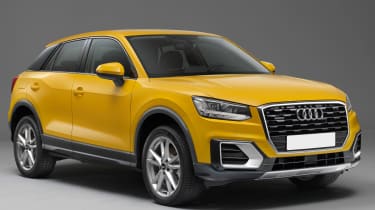
10. Blade cuts the air
The Audi Q2 features a ‘blade’ on the C-pillar which can be specified in a number of finishes to complement or contrast against the body colour. But the blade isn’t just cosmetic – its special shape helps smooth air around the back of the car, aiding stability and reducing the amount of dirt and rain reaching the rear window.
Find a car with the experts

